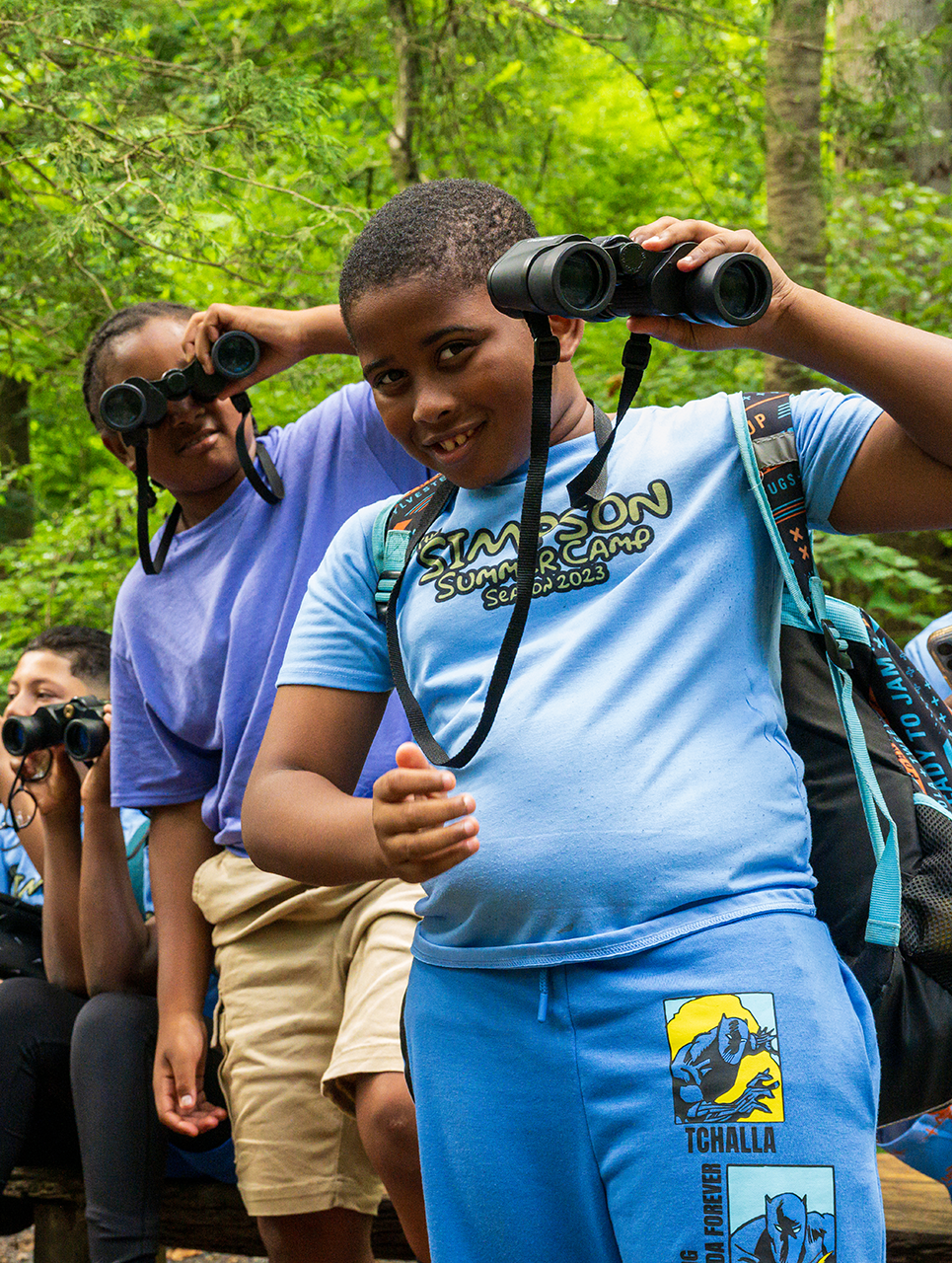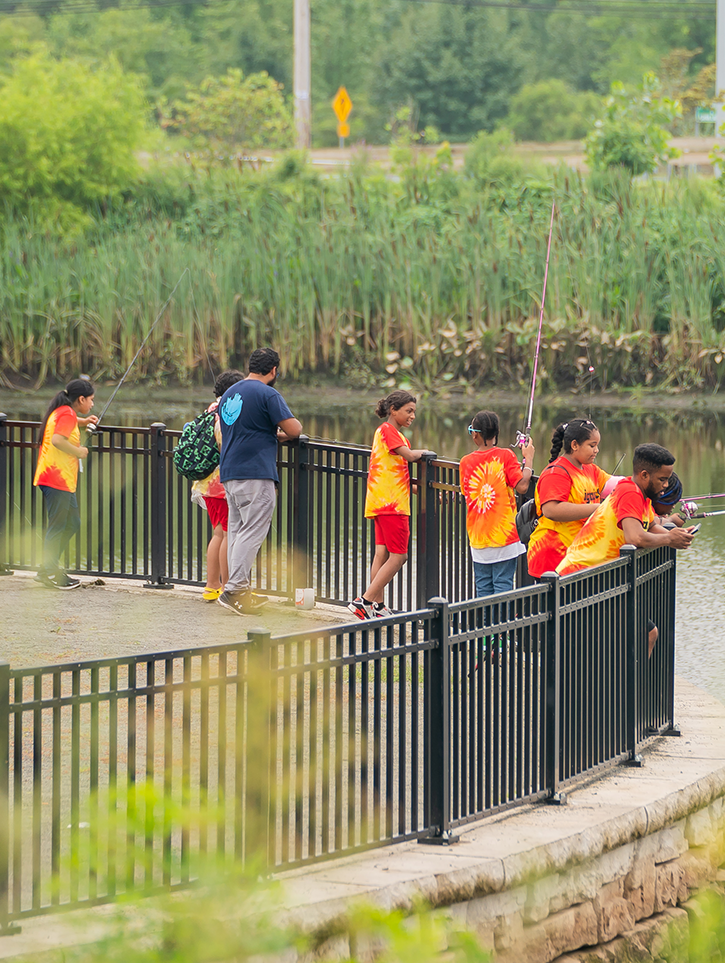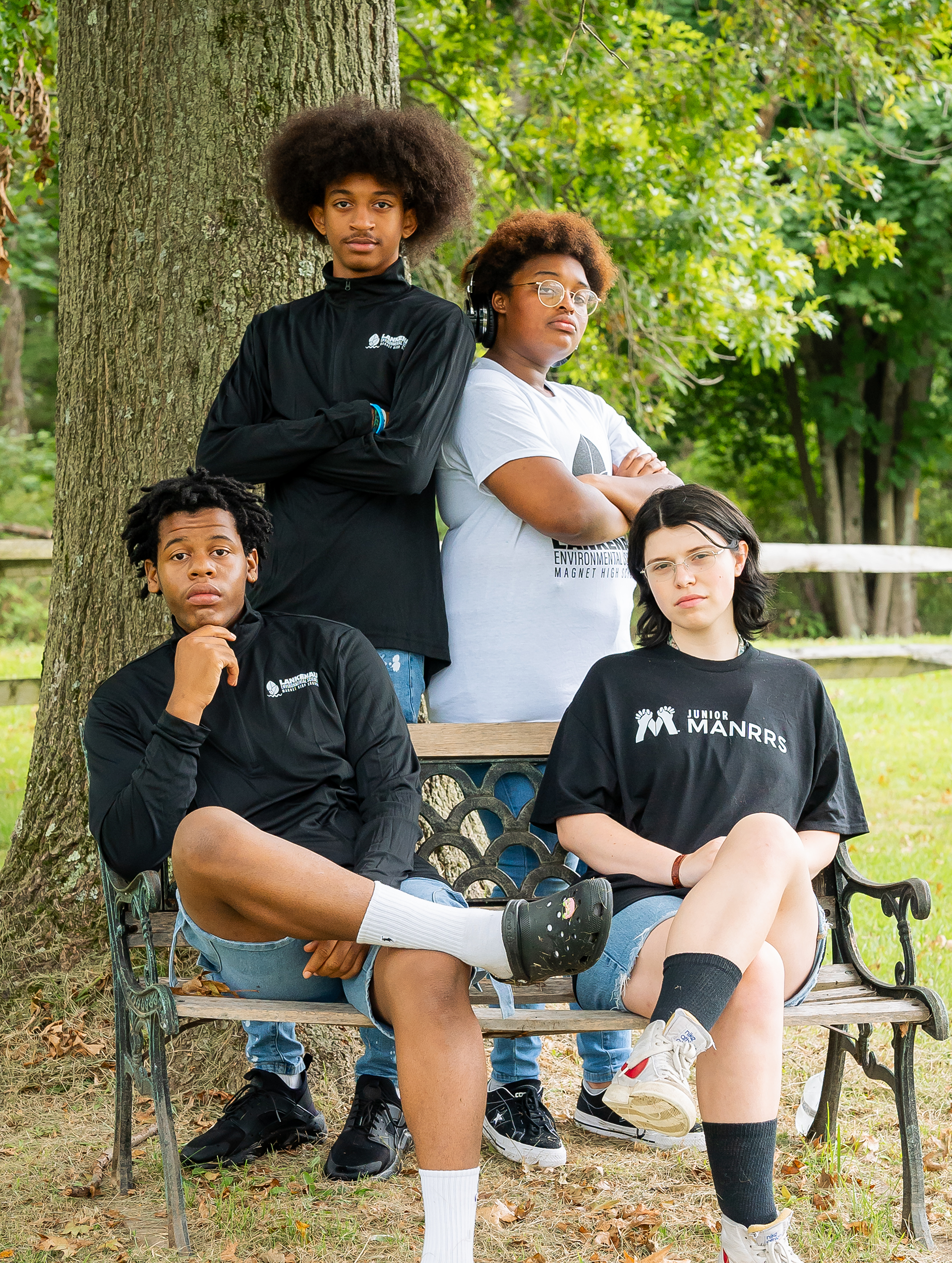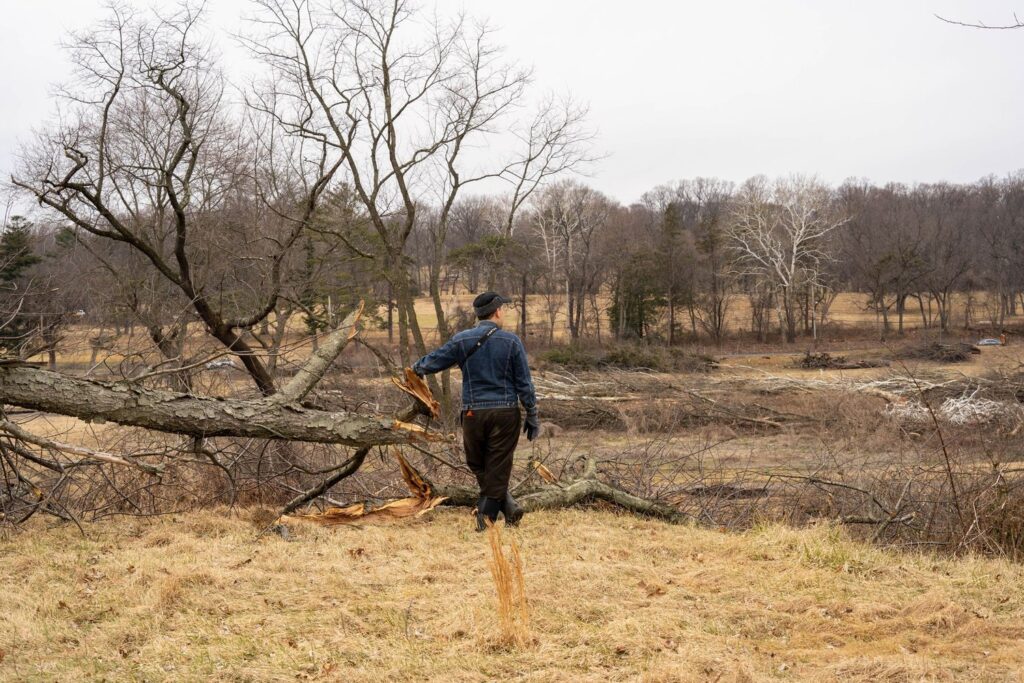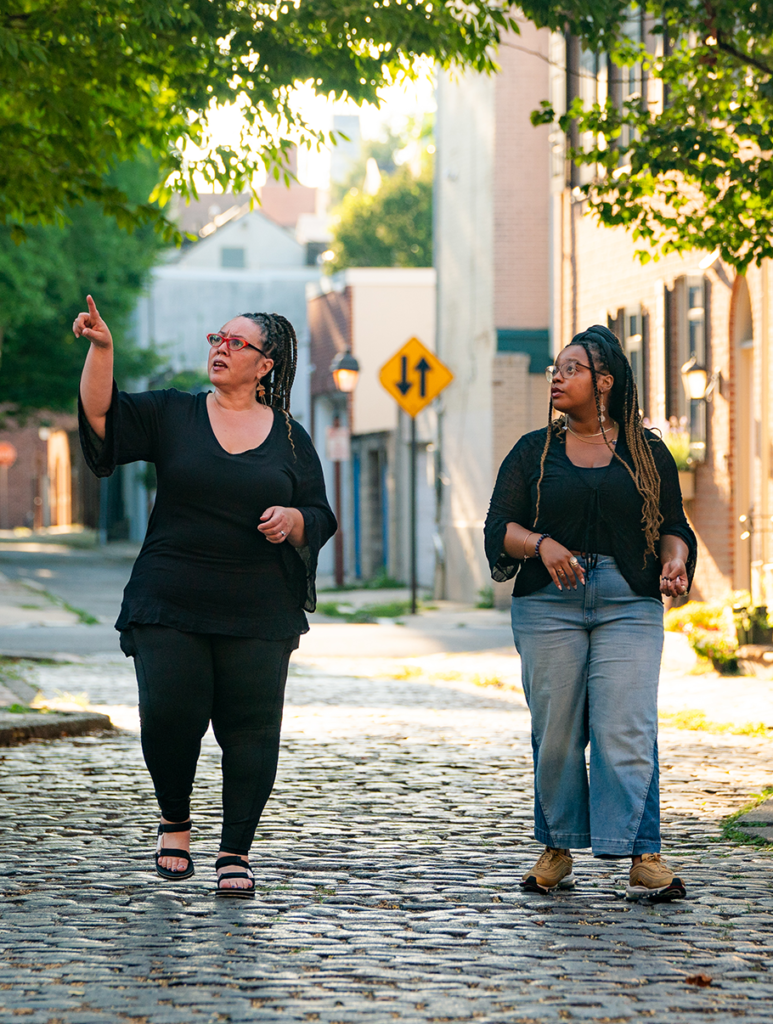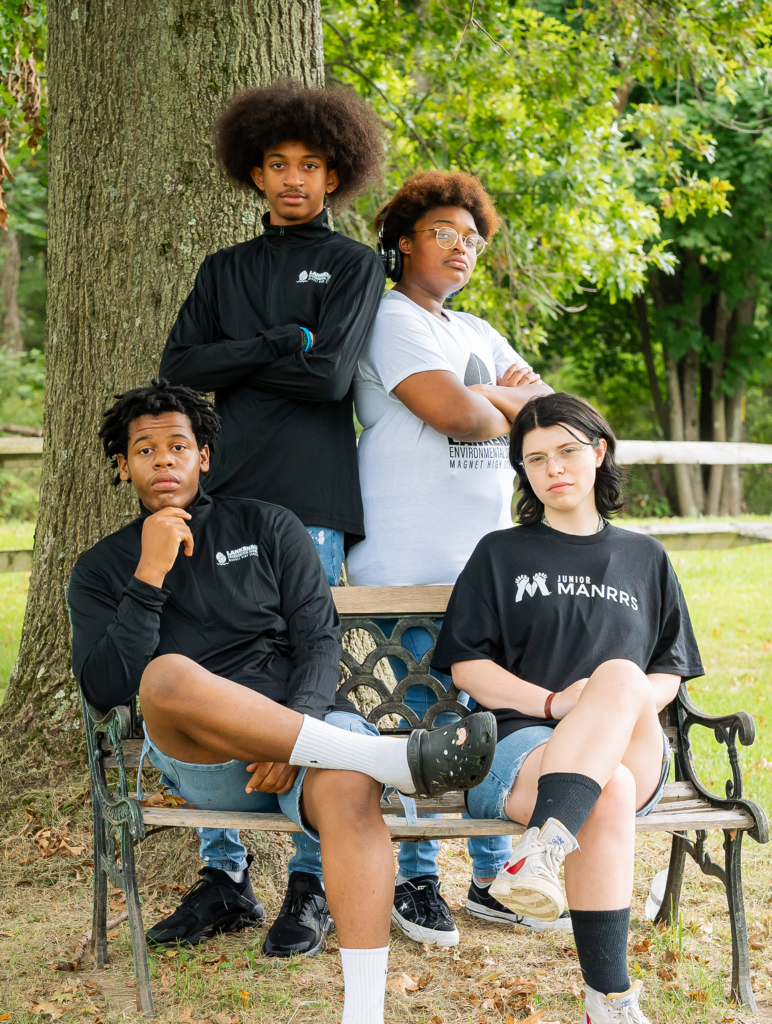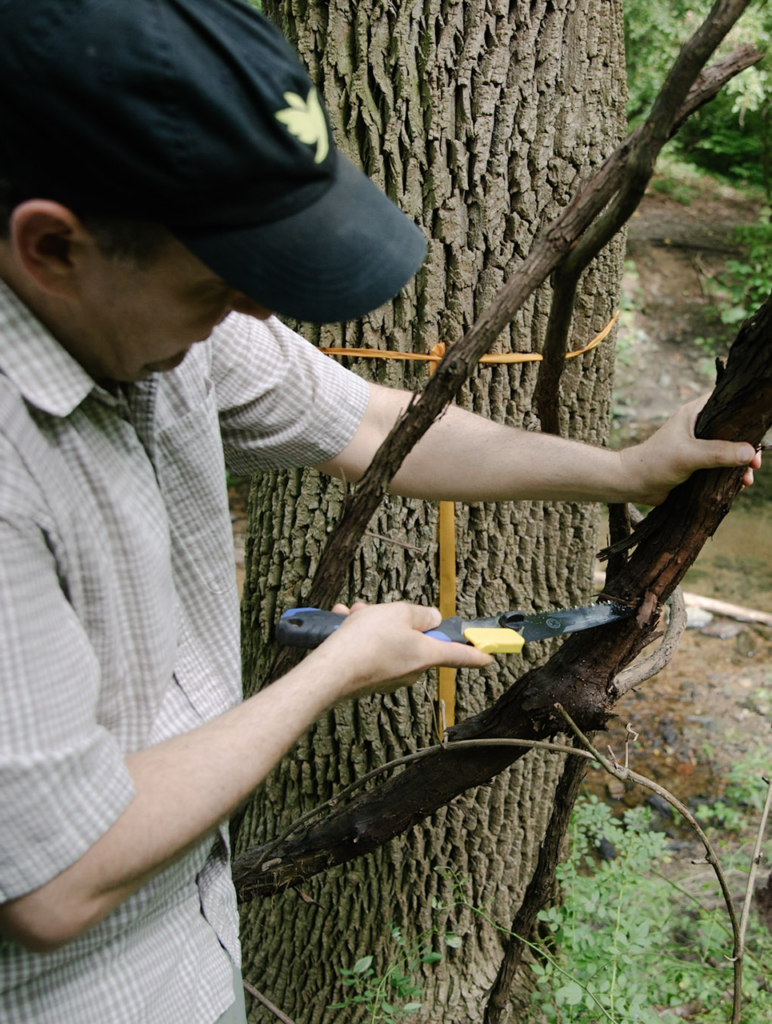On a damp morning in July, children spill around the corner of the Tree House and flit through the woodland garden exploring the grounds surrounding the Wissahickon Environmental Center (WEC) in the northern end of Wissahickon Valley Park.
“Will we find bears?” one young girl asks.
Jeneen Helms, an assistant from the West Mill Creek Recreation Center, assures her that they will not.
A young boy runs up to any adult who will listen. “We found a frog!” he yells excitedly.
Sean Bradley, a seasonal instructor, casts an experienced eye over the garden area where the boy points and offers a gentle correction. “Where was the toad?” he asks.
The youngster leads Bradley to a grassy thicket. “The frog was over here!”
The children exploring the natural areas surrounding the WEC are part of a program sponsored by Philadelphia Parks & Recreation (PPR). Throughout the summer season, recreation centers throughout the city bring children, chaperones, youth workers and camp counselors to the center, known locally as the Tree House. From 1890 to 1981 a large circular hole in the back porch roof accommodated a towering sycamore tree, according to the Friends of the Wissahickon website.
According to Tony Croasdale, who manages the WEC program, the group of 10 children between six and 12 years old was smaller than usual. Groups typically number between 20 and 60, he says. Croasdale, an environmental education program specialist, sees himself as a naturalist.
Croasdale says the work isn’t solely about play. He wants to share the benefits and wonders of nature with as many Philadelphians as possible, especially with people of color and those who don’t have easy access to green spaces. He’s especially happy when the groups come with adults.
They all get exposed to [nature]. Everybody gets this information.”
— Tony Croasdale, Wissahickon Environmental Center
“They all get exposed to [nature]. Everybody gets this information. They’re all a unit [even if] they’re not engaged in the activity. They’re hearing it and they’re in there seeing it. To me, it’s really valuable to get to the staff. And … when they come with chaperones, you know, that’s a great thing,” he says. “It’s … the most effective outreach,” Croasdale says. “It’s people who aren’t choosing to come here [on their own].”
In addition to Croasdale, the WEC team includes fellow educator Susan Haidor, two PPR seasonal staff, a groundskeeper and volunteer trail ambassadors from the Friends of the Wissahickon. When a large group visits for a trail walk, it’s helpful to have knowledgeable people on hand, Croasdale says.
“You never know when you’re going to spot that toad, or when you’re going to see something in bloom,” Croasdale says. It’s all about showing them things they might have missed and telling them the story behind it, and there’s generally an intergenerational benefit, he says.
The visitors aren’t the only people learning at the center. Croasdale says he is proud of the young seasonal instructors from the PPR workforce development program. They bring an interest in environmental sciences, and the experience they get at WEC enables them to get that next full-time job in the field. Employers “want someone that has done this stuff, has had hard days in the field, in poison ivy … in 90 degrees and humidity and knows what it takes,” he says. “They know … the basic principles of identification of various taxonomic groups — plants, reptiles, amphibians and birds. You name it — insects — they already have a lot of experience.”
Maxine Antinucci, a first-year instructor, found out about the position through a teacher and loves the work. “Oh, it’s super fun. I always liked nature. I wanted to [be an] environmental high school teacher and also a game warden. So, this is a good foot in the door.”
Bradley, who found out about the program from his grandparents, is back for his second year. He likes taking the youth groups down to the creek and teaching them about things like aquatic macroinvertebrates, small organisms that lack a backbone. He explains they’re indicator species that help scientists evaluate the health of a creek.
In addition to seasonal staff, the WEC provides work experiences for disabled youth through the Youth Advocacy Program (YAP). Funded through the Pennsylvania Office of Vocational Rehabilitation, YAP provides workforce training for youth and young adults with a wide range of disabilities, says Chanel Summers, program manager.
Collin Kuchar and Simon Koval-Bauer, YAP workers, were busy clearing logs from the trails. Koval-Bauer says he likes feeding the box turtles and was pleased to have just received his first paycheck.
“Last week we made sugar water for the hummingbirds,” says Kuchar. “I like the peace and quiet.”
In addition to the outdoor adventures, visitors find lessons in natural science inside the center. Aquatic turtles cruise a giant tank, and taxidermied predatory birds stare down from the walls. “The kids get excited to see things under the microscopes,” Croasdale says. “They realize there’s a whole diversity of life they [normally] don’t see.”
Susan Haidar, WEC educator, says that after the summer season, the center gears up for school groups. The WEC received a special grant from the Friends of the Wissahickon through the Let’s Go Outdoors program to reach more K–3 school groups, she says. But before school is back in session, Croasdale anticipates that 30 to 50 recreation center groups will visit.
On the day that the West Mill Creek group visits, a girl sidles up to trip leader Akeem Robinson, shaking her short braids and swatting at herself. After a brief inspection, Robinson, who has been working in his position for three years, tells her, “No bugs on you. You’re fine.”
Bradley and Antinucci pass out binoculars and prepare the group for the possibility of seeing animals — a snake, maybe? — on their walk. “It’s not going to attack you,” Bradley says. “Just don’t touch it … This is their house.”
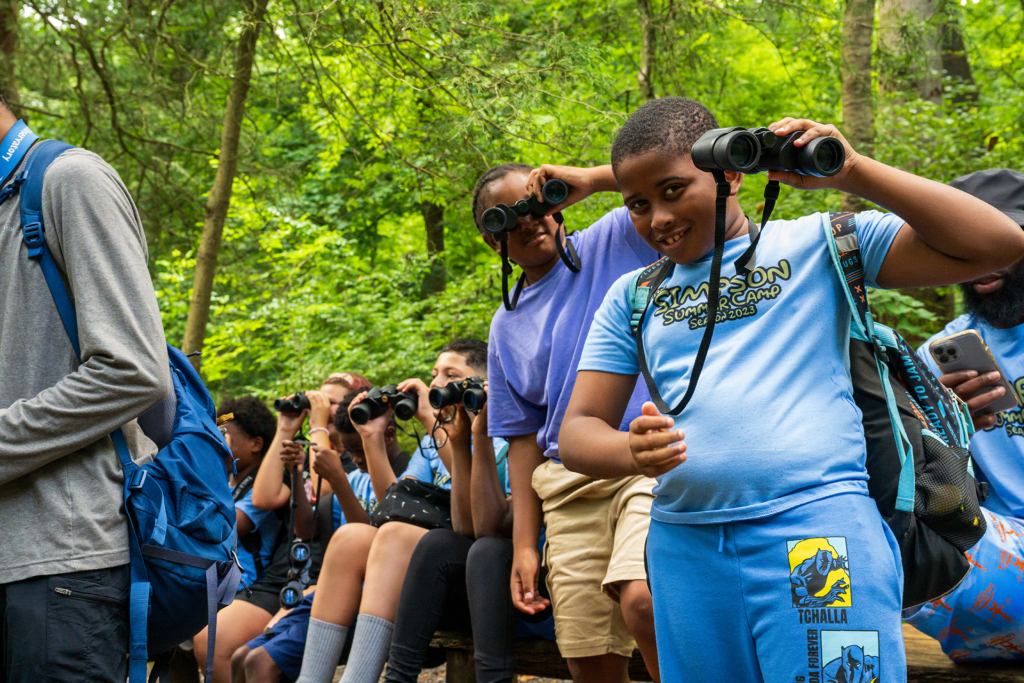
The WEC is open to the public Monday through Friday from 8 a.m. to 4 p.m. The building may be locked if staff is on the trails, and weekend hours are limited. Visitors may stroll the grounds. The road leading to the environmental center is accessible by public transit.

